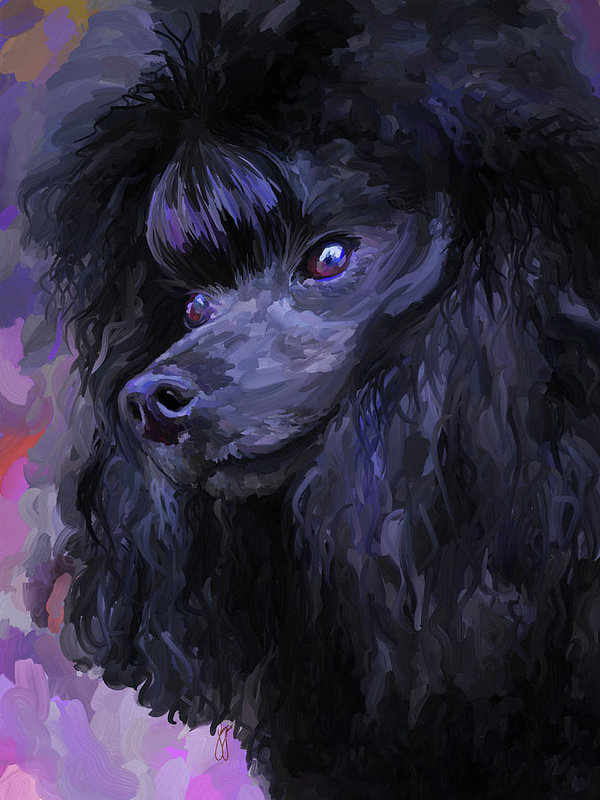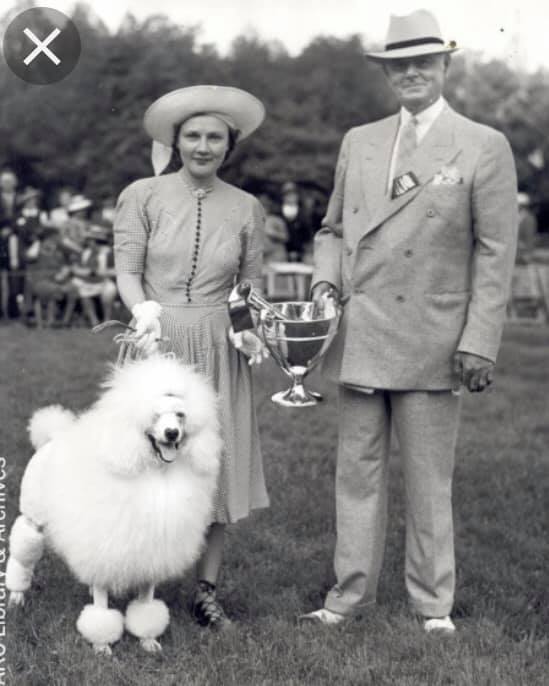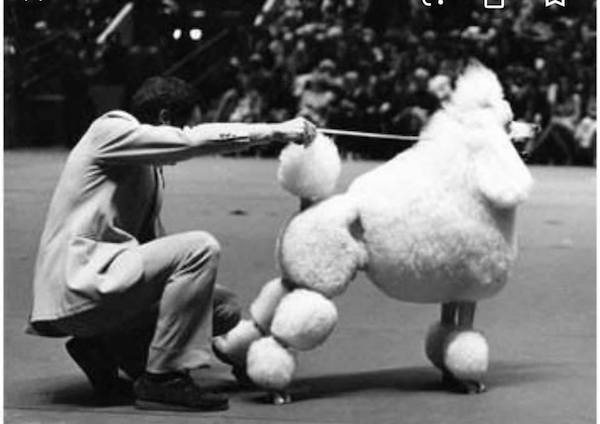
Occasionally, a professional groomer will be asked to give a pet a rounded head like a stuffed teddy bear, and indeed, the cut is called a “teddy bear” and is typically given to small breeds like a Shih-Tzu. Sometimes, an owner will want more hair left on the dog’s head for a fluffier appearance, and if we’re not mistaken, this is called a “Bichon-Head.” It’s typically given to (wait for it) a Bichon Frise because the breed has the full, fluffy hair the cut needs to be scissored properly.
The owners who ask for a “Bichon Head” will probably never have heard of Frank Sabella, but it is he who is credited for the “modern” development of the Bichon Frise grooming style. A renowned handler, Sabella set the stage for the sculpted style we see in show rings today. He bucked the previous trend of leaving the beard and grooming ears distinct from the rest of the head.
Sabella’s impact on grooming wasn’t limited to the Bichon, and this post isn’t just about the Bichon Frise. Sabella, himself, felt his greatest achievement was with a black Miniature Poodle named Fredrick of Rencroft, or “Freddie,” who, at the age of two, was the Number One Dog – all breeds – in 1966. The way Freddie was trimmed later impacted the breed standard. It was a “look” that Sabella brought to the other Poodles he handled, and it was soon imitated.
What did Frank Sabella do with Poodle grooming that was different from what was being done?
We asked veteran fanciers better versed in Poodle grooming than we are, and were delighted not only with a great answer, but with visuals! “Allison” shared two photographs that illustrate this nicely. Take a look at each picture and see how each Poodle was beautifully groomed, but each with a very different look.

Photo from AKC archives and shared with consent

Frank Sabella handling Ch. Acadia Command Performance. Photo credit happily given upon receipt of information
“Annie” helped us understand that Frank scissored the coats in a more sculptural way, and emphasized length of neck and athletic rears. A very vertical presentation. Before this, Poodle grooming was less sculpted, longer, and more horizontal. As Allison also pointed out, the jacket of the dog appearing with a silver cup was much lower to the ground.
In an interview with Best in Show magazine, Frank revealed that his favorite Poodle trim is the English saddle, an old fashioned trim that is more work than other trims because there is more scissoring involved, but Sabella regards it as the classic trim.
A bit more Poodle perorations:
The very first woman to win a Best in Show did it with a Standard Poodle in 1935. That “first” accomplished by Mrs. Sherman Hoyt would not be repeated until 1956.
While Poodles have been shown at Westminster every since 1877, the dogs entered in the Miscellaneous Class were sometimes described as some incarnation of a Poodle: There was a Spanish Poodle, a Spanish Silk Poodle, a Belgium, Black, Canniche, French, French Grey, Pointer, and Wool Poodle, and of course, there was the corded Poodle.
In 1912, and for the first time, the Poodle class described entries as either Curly or Corded. In 1919, the breed (Variety) was called Poodles (Curly) and apparently there would’ve been a separate variety called Poodles (Corded), but there were no Corded entries from 1919-1923. This is further reflected in the fact that the Non-Sporting Group had a slot for a Poodle (Corded) winner, but again, there were no Corded entries from 1924-1927. In 1928, the Variety was again called simply Poodles.
The terms “Standard” and “Miniature” appeared in the Westminster catalog for the first time in 1934. Until 1940, one dog was selected simply as “Best Poodle,” and that dog advanced into the Non-Sporting Group. In 1940, Best of Variety was awarded for both a Miniature Poodle and a Standard Poodle, and again, only one of them was selected to go forward into the Non-Sporting Group.
There are more reasons to admire the Poodle than its versatility and elegance. There are so many ways to groom that coat!
Image: Black Poodle by Jai Johnson is available as prints, lifestyle items and home decor here, and also here
